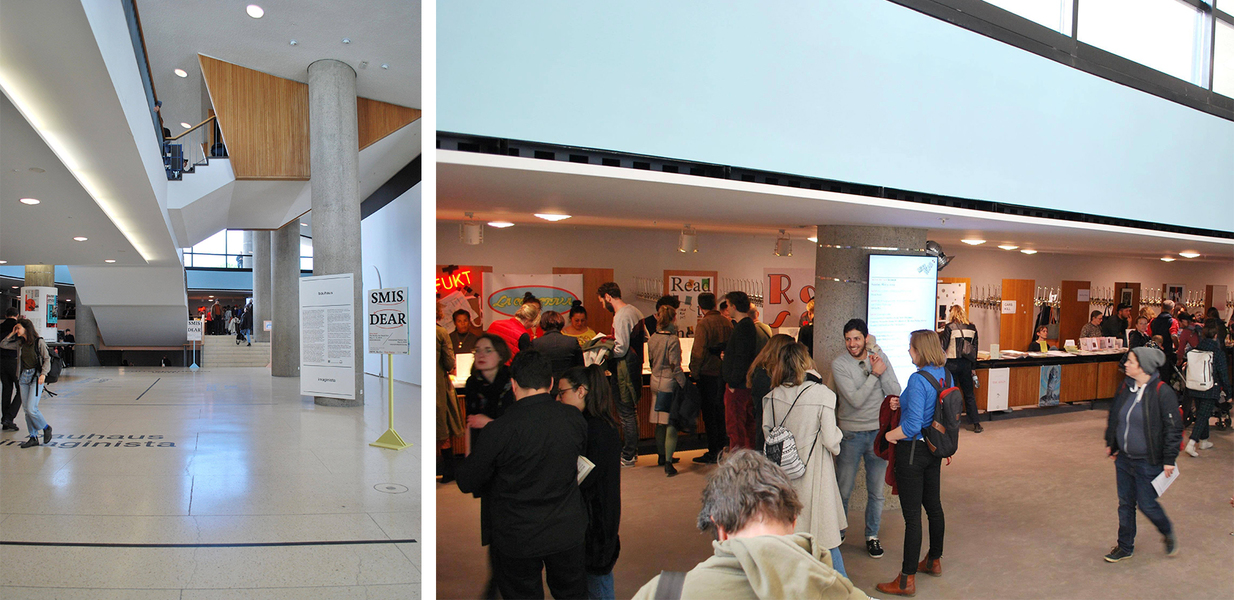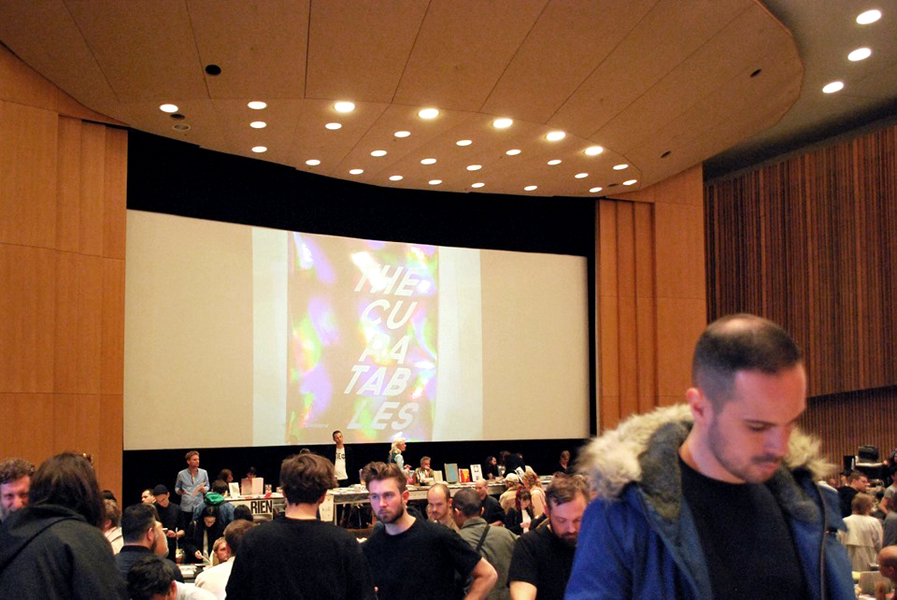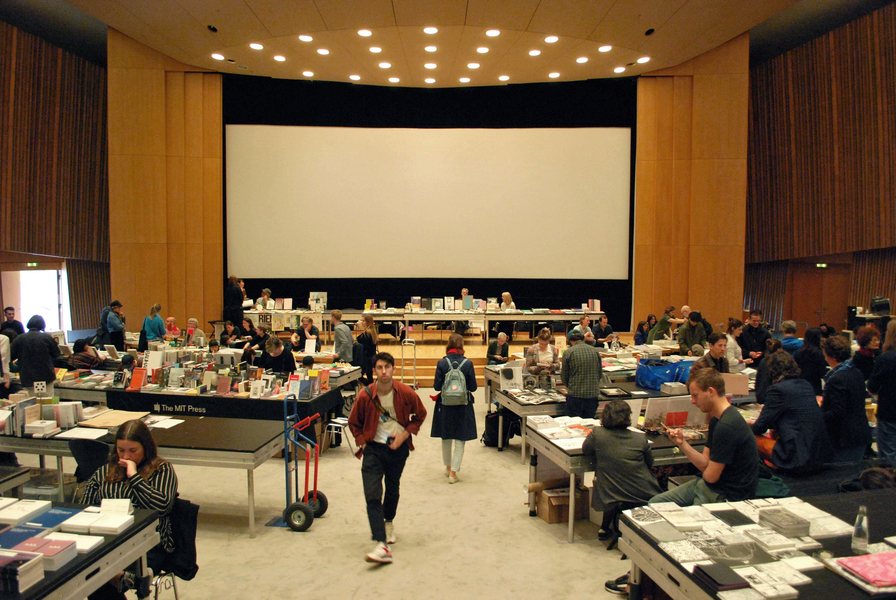The Book Fair as Artistic Practice
Text and photographs: Marija Hristova
Published on: 29.05.2019

Haus der Kulturen der Welt, Berlin
The Miss Read Art book fair in Berlin was founded in 2009 and is one of the world's largest art book fairs. For the last two years it’s been taking place at the famous Haus der Kulturen der Welt in the center of Berlin, spreading throughout all of its spaces. Founded and ran by artists that define its primary goal in the sense of reflection on, sustainability and further development of the community of artists, publishers and the audience of artists’ books, through exchange of ideas. This principle resembles more the ancient agora, rather than the modern market.
To accomplish this goal, the program of the tenth edition of Miss Read (May 3-5, 2019), similarly to the previous years, aside being filled with publications from almost 300 international publishers, artists, zinesters - was additionally consisted of discussions, lectures, the regular program of the Conceptual Poetics Day, workshops, exhibition...

In addition to its activities, the very rules of the game and the frames of the fair, define it as a rounded and significant product. Each of the participants at the fair has equal space and equal access to the tools for presentation and advertising of their publishing practice, both at the event itself and through the fair’s social media. The idea of equality and inclusiveness brings the organizers to give every exhibitor the same spatial conditions - approximately one square meter: large publishers such as MIT Press, JRP Ringier and others have the same space to exhibit their works as artists with only one work. Publishers could present themselves within the discursive program and suggest an activity. What particularly caught the attention was the usage of a large screen for film projections and the recording technology set into the auditorium of the center. Its purpose was to allow the exhibitors to brows and promote their books and practice in real time. This approach, advertising, curatorial, and performative, was an added visual value in the entire atmosphere of the event.

All this, as well as the direct encounters and conversations with the visitors, was infused with the idea, the conditions, the sustainability and the creative presentation of these books and their publishers. Miss Read managed to open up space for reflection on the conditions of independent publishing, in general, and thereby give the fair value in the context of its goal of being an agora for the exchange of ideas, and not solely a market.
The work of the founders on Miss Read and Miss Read itself in this field is particularly significant. Their publication, in coollaboration with the MIT Press, titled Publishing Manifestos, which was first published in 2018 and this year had its second and extended edition launched at the fair, it is a prove for that . The idea is to present a new kind of catalog that will contain the principles of the publishers' work, throughout different time periods, also indicating some self-referential considerations of their activity. This collection of manifestoes, views, statements about publishing practice contains important documents and texts starting with Gertrude Stein in 1914, until today. It contains texts seen by the editor as reference for publishing that were not thought of with the idea of a manifesto, as well as those that were written specifically for the book from publishers who were part of the fair. Whether they are detailed manifestos with footnotes and references or playful representations of the position of the publishers and authors, they all carry a very similar passion towards publishing practice, and a deep and personal involvement in the process of creating books as works of art.

Publishing Manifestos, Miss Read/MIT Press, 2019
However, when one should think about own practice of publishing books that go beyond the frames of the standard formats and the usual business plans, one comes to the fact that the publishing practice itself has artistic, conceptual, curatorial aspects. The same thing, the founders of this fair are trying to include it in its organization.
“We have reached a privileged historical moment when running a publishing house - or a book fair - can be art work. At the same time, it is Sozialarbeit (social work), a mode of production analogous not to the creation of material goods but to the production of social contexts.” (Michalis Pichler, Publishing Manifestos, Miss Read/MIT Press, 2019, p. 19)
The significance of this book, as well as the entire artistic practice of the fair, ultimately, is in the definition of the field of struggle of independent publishers and their contribution to the maintenance and support of the bibliodiversity. This part of the publishing industry that deals with artists’ books, printed matter and related publications is a subversive component in the trade. By maintaining and creating non-standard, multimedia, interdisciplinary forms, book-objects, one copy books, no-ISBN books, exclusive and original limited edition editions such as the numbered graphic prints, specific use of technology, research on printing methods, types of publications, and publishing tools - it generates diversity that explores the boundaries of the print media, the concepts of multiplication of the works and the communicative premises.
